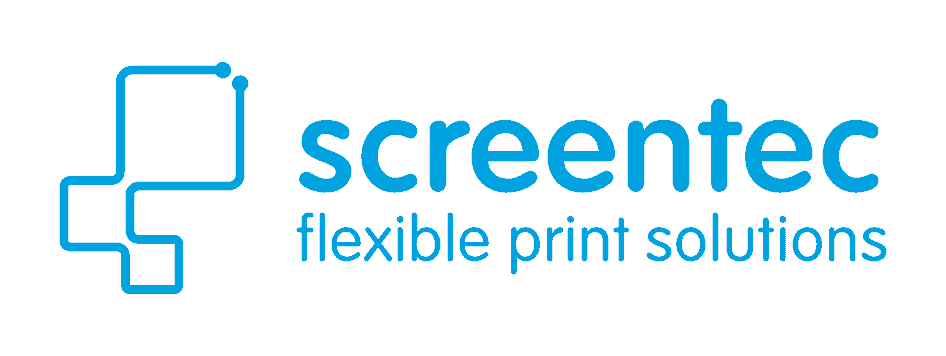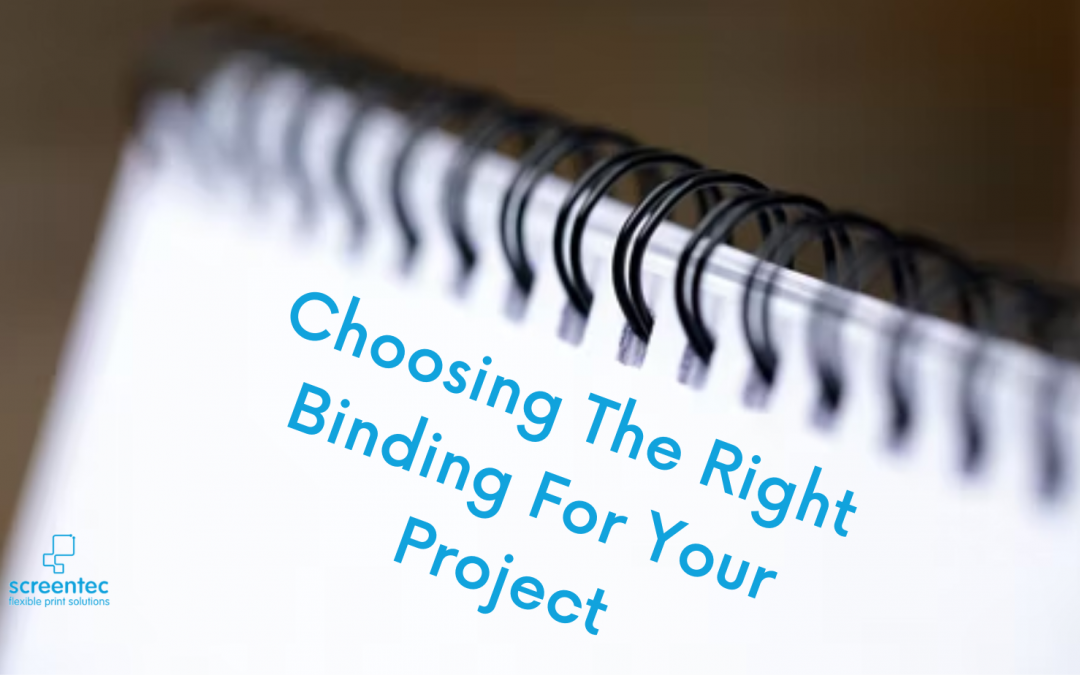Completing a project can feel incredible; putting all your efforts into a well-designed and presented project simply feels great. However, this can soon become frustrating if you do not know which binding is the right one to choose for your particular project. Knowing which type of binding is right for your project can be challenging if you’re new to printing your projects.
If this sounds like your current situation, have no fear! We at ScreenTec are experts in the binding field and here to help you. To make your life more manageable, here’s a run-through of some of the most common binding options available and which you should choose for particular projects.
Which binding is best?
There’s no right answer to this question; every binder serves a different purpose! This question will ultimately come down to what you are looking to bind, the size of your project and the type of finish you would like to have on your project.
While many binders look similar, they all have small characteristics that will either make them perfect for you and your project or completely rule them out of being used by you. Choosing the right one for you comes down to what purpose you would like your binder to serve and how you would like it to be presented in its final completed form.
Are you looking for a hard cover finish? Perhaps you want something smaller and more subtle? Either way, this article will explore the types of binder available to you and what works best for different situations.
-
Hard Cover Binders
Suppose you’re looking for a more professional finish to impress viewers with your project. In that case, the hard-covered binder may be the perfect solution. Hard-covered binders provide a professional, or sometimes, executive feel to your project that adds that final touch you’re looking for. Hard-covered binders provide structural support, eliminating the risk of any tears, creases or crumpled pages that could be damaged with a soft-covered binder.
As well as providing protection and structural support to your documents, it also just looks amazing!

Hard-covered binders are available in many different finishes, including plastic or PVC, to provide an executive look that oozes class and brings importance to your document. Hard-covered binders are definitely a strong option if you are working with a project of high importance or looking to present this to a high-value individual like a business partner or supplier.
The hard-covered binding option is the go-to option if you’re working with high-value corporate projects and are looking for that luxury, executive-like finish.

-
Boxfile Binder
Are you looking for a binder with a professional design that also has major space efficiency advantages? In that case, the boxfile binder might be the perfect binding option for you. A boxfile binder is a fantastic option if you have many smaller documents making up one larger project. This allows for the safe transport of all documents without losing anything.
The boxfile binder also provides a unique space efficiency advantage over other binding types. The contents of the boxfile binder will only be as wide as the boxfile itself, meaning your binder retains its shape and provides a sleek, professional finish.
-
Ring Binder
The ring binder is probably the best-known binding method, which is reliable, strong, and a great choice for keeping individual projects organised and separated. Ring binders come with either soft or hard covers so you can get the perfect finish you desire for your project. Ring binders allow you to add in, take out and swap your documents around while keeping them neatly organised and protected from potential damage.
Ring binders can be purchased in various sizes to ensure that no matter your project size, you’ll be able to find a ring binder that fits your needs perfectly. Ring binders can also be used as a powerful marketing tool. Ring binders will add a feeling of authority and professionalism to your project. With ring binders providing a look of organisation and professionalism, they are an easy way to add more credibility to your documents.
Which material is best?
The material you use for your binder is an interesting decision to make. Each material has different advantages and may fit your specific needs better than the others. Let’s go through a couple of the options available to you and discover which is best:
-
PVC
PVC is a strong, long-lasting, durable material perfect for high-volume paperwork environments. If you’re looking for a binder to protect your documents and keep them in order, PVC may be the direction you want to head down.

-
Paper-Over-Board
While paper-over-board is not as strong or durable as the PVC option, it is incredibly versatile. These binders are highly customisable, being able to be tailored to any size and have any design placed on them, providing a bespoke service.
Paper-over-board is great if you’re looking for a more cost-effective option to purchasing in bulk with bespoke designs across them.
-
Polypropylene
If you’re looking for a cost-effective option, it doesn’t get much better than choosing Polypropylene. It has a simpler manufacturing method than other binders, which brings its cost down compared to other materials. It also has highly protective properties, protecting documents from damage or spillages.
This may be the perfect material for you if you’re on a budget and need something strong and reliable.
Contact us
Here at ScreenTec, we can produce bespoke binders made to order in various materials. If you’re still stuck on which binder may be best for you, get in touch with us today! Our expert team is on hand to answer any questions you may have and point you in the right direction.
Take your first step toward a more organised project today with binders from ScreenTec.
Related Articles
We hope you found this piece insightful and helpful on your journey toward choosing the perfect binder for you. If you liked it, here are some other articles that we think you’d love:



Recent Comments